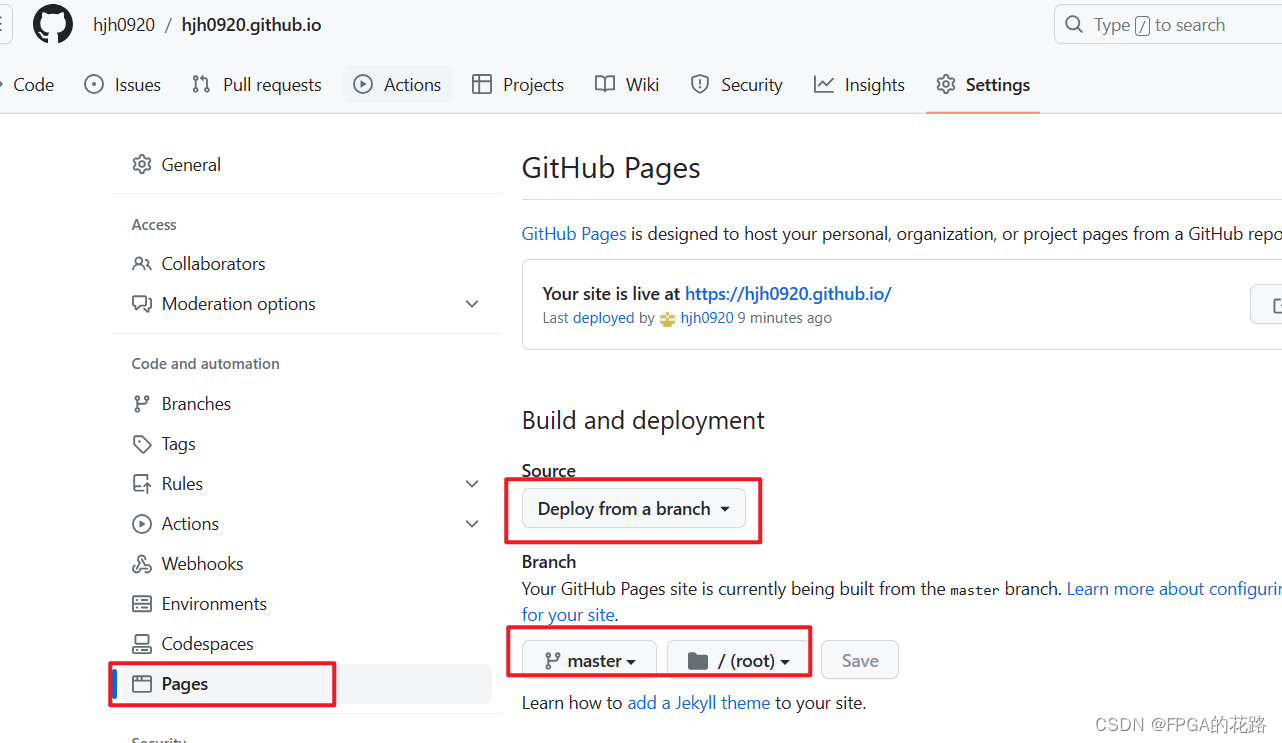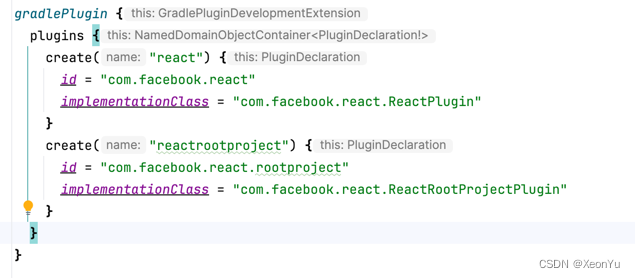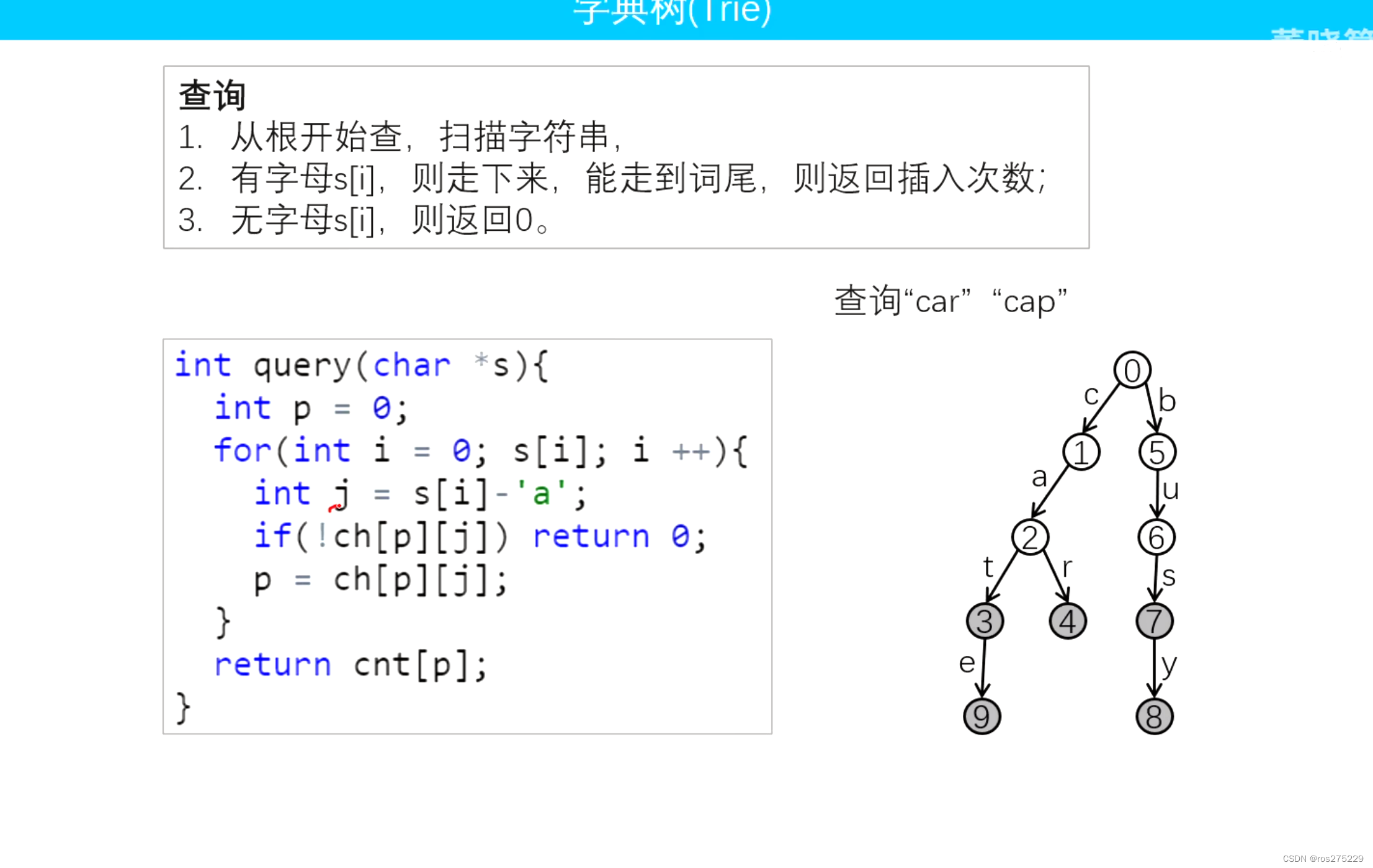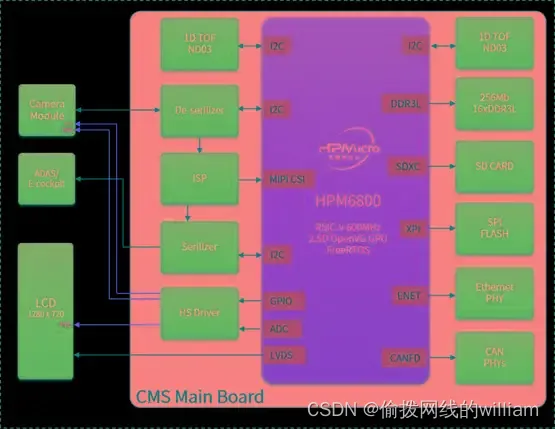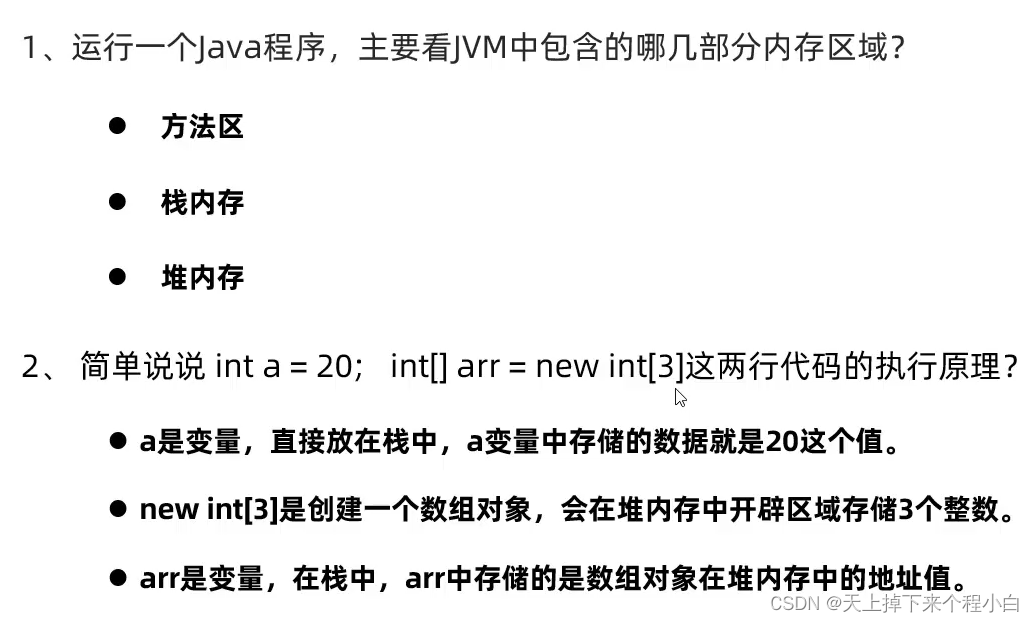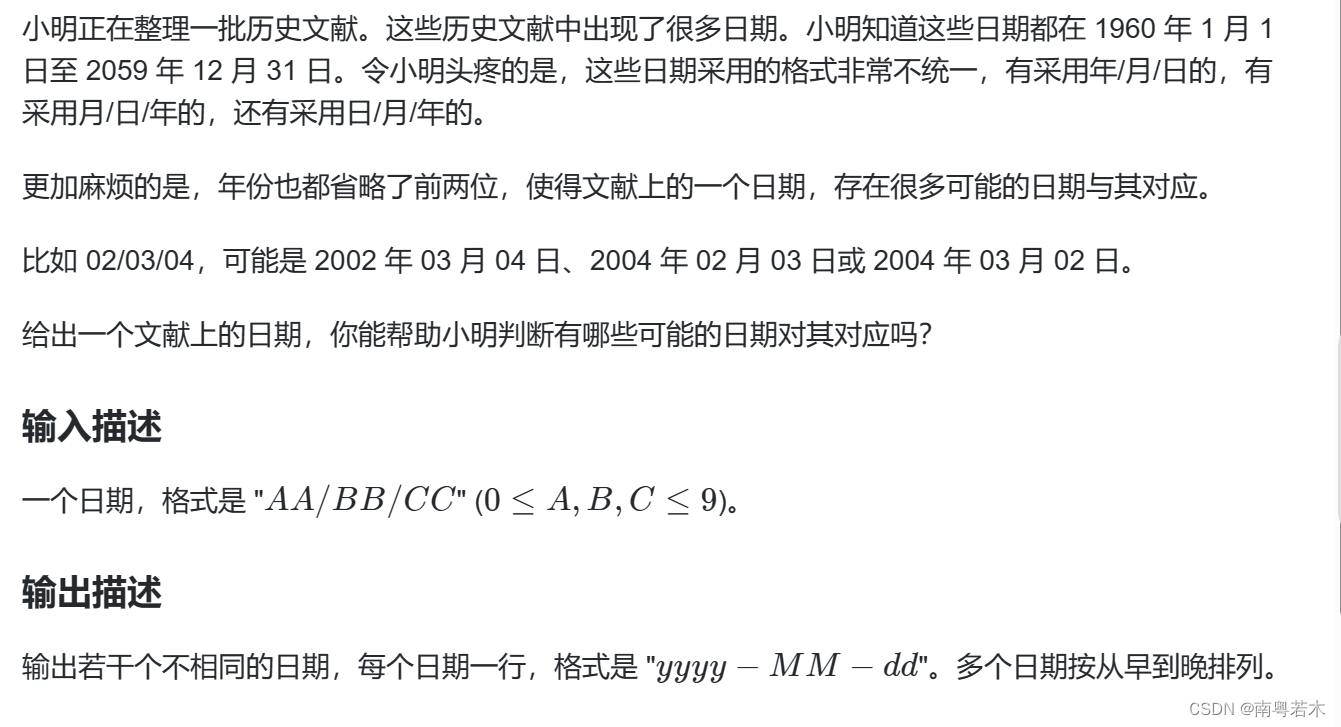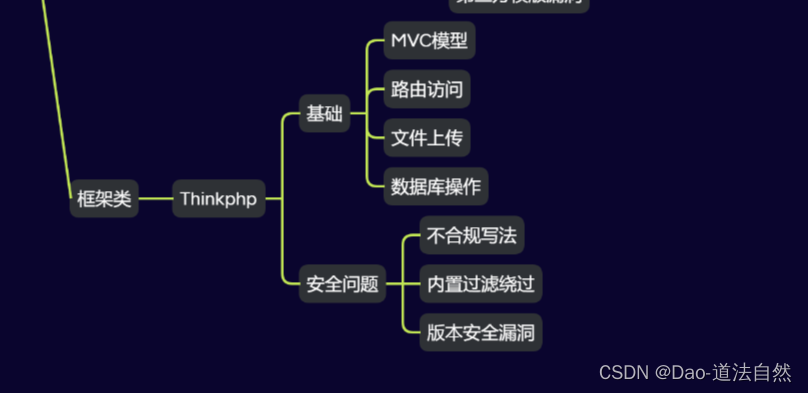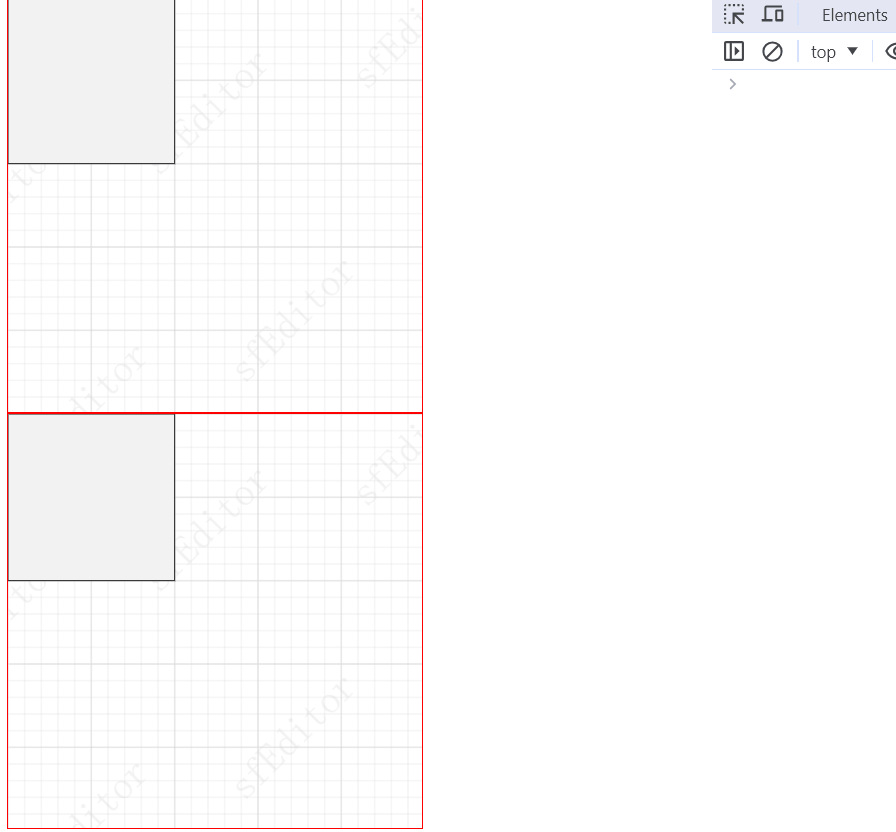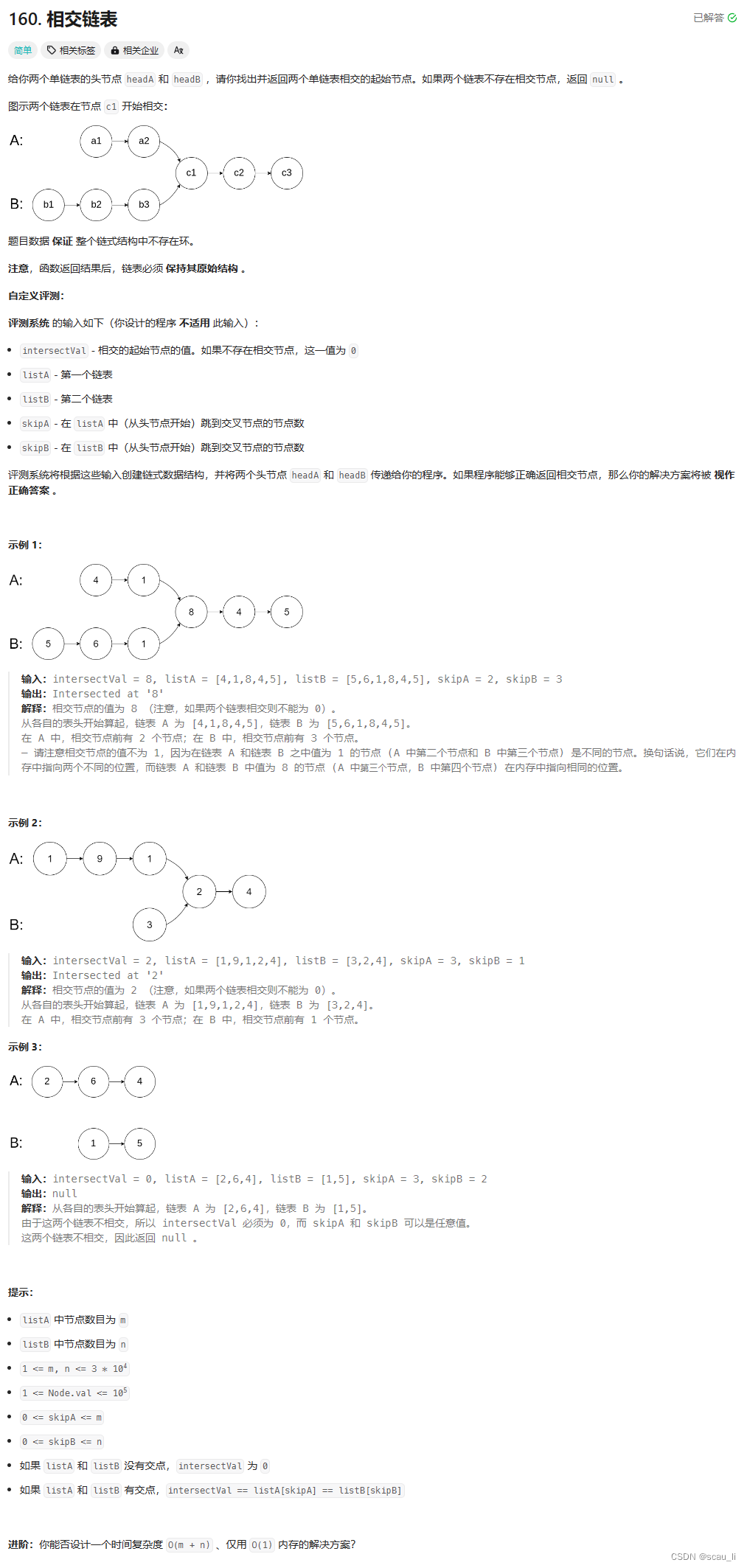
题解一:
哈希表:两链表出现的第一个相同的值就是相交节点,因此我们先用哈希记录链表A所有出现过的值,再遍历链表B查找哈希表,找出第一个相同的值即为结果。
import java.util.HashSet;
public class Solution {
public ListNode getIntersectionNode(ListNode headA, ListNode headB) {
HashSet<ListNode> set = new HashSet();
ListNode temp = headA;
while (temp != null) {
set.add(temp);
temp = temp.next;
}
temp = headB;
while (temp != null) {
if (set.contains(temp)) return temp;
temp = temp.next;
}
return null;
}
}题解二:
双指针遍历:以指针a,指针b分别遍历链表A和链表B。当指针a到达链表A末尾时,从链表B起点开始继续遍历;当指针b到达链表B末尾时,从链表A开始继续遍历。这样,如果两链表有相交点的话,指针ab会同时到达这个交点。
理由是链表AB具有相同段和不同段,记不同段为Ta、Tb,记相同段为Tc,则按上述步骤遍历至交点时,指针ab的路径Ta+Tc+Tb = Tb+Tc+Ta。
public class Solution {
public ListNode getIntersectionNode(ListNode headA, ListNode headB) {
if (headA == null || headB == null) return null;
ListNode a = headA;
ListNode b = headB;
while (true) {
if (a == b)
break;
if (a != null) {
a = a.next;
} else {
a = headB;
}
if (b != null) {
b = b.next;
} else {
b = headA;
}
}
return a;
}
}